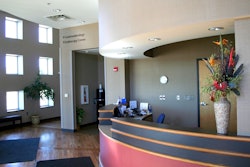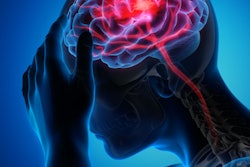Incidental discovery of old strokes on head CT imaging offers clinicians an opportunity to put measures to prevent future strokes into place, researchers have found.
A team led by medical student Carys Kenny-Howell of Yale School of Medicine in New Haven, CT, noted that finding previously unknown strokes on CT neuroimaging can reduce risk of future strokes by up to 80%. The study results were published November 18 in the Journal of the American College of Radiology.
"Drawing attention to incidentally identified unknown strokes on head CT represents an untapped opportunity to implement secondary prevention and reduce recurrent strokes," the group noted.
Old strokes that have not been identified can appear as brain softening called encephalomalacia, which may be detected incidentally on imaging for other reasons, the researchers explained. Kenny-Howell and colleagues assessed the prevalence of previously unknown strokes among head CTs performed in the emergency department.
They conducted a study that included 21,985 head CTs performed in three emergency departments between July and December 2023. Of these, 4% (869) identified old strokes. Of these old strokes, 43% (372) were previously unknown, Kenny-Howell and colleagues found. Old strokes were characterized by the following factors: Older age, single site, and location in the gangliocapsular region or cerebellum.
| Odds ratio for unknown stroke characteristics | |
|---|---|
| Characteristic | Odds ratio (with 1 as reference) |
| Older age | 1.03 |
| Single site of old stroke | 2.7 |
| Smaller strokes | 1.8 |
| Gangliocapsular location | 2.8 |
| Cerebellar location | 2.1 |
| *All results statistically significant | |
"Incidental unknown strokes may be particularly suited to 'opportunistic screening, i.e., systematically leveraging imaging findings to impact population health," Kenny-Howell and colleagues wrote.
"More than a third of old strokes on head CT imaging are unknown to patients and clinicians," they concluded. "Capturing this opportunity for secondary prevention could benefit 100,000 to 200,000 patients per year in the U.S., based on trends in emergency department care."
The complete study can be found here.




















